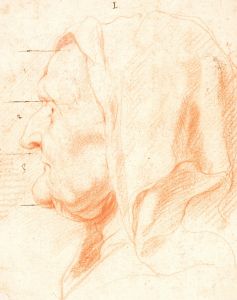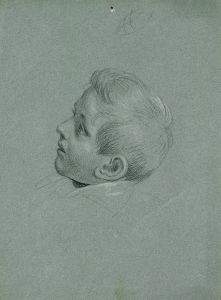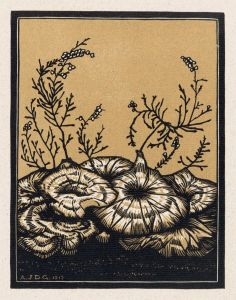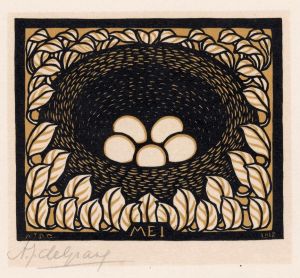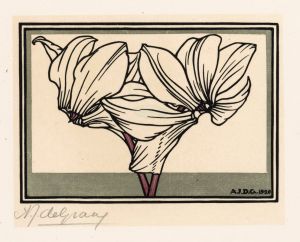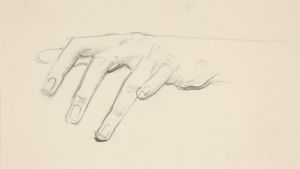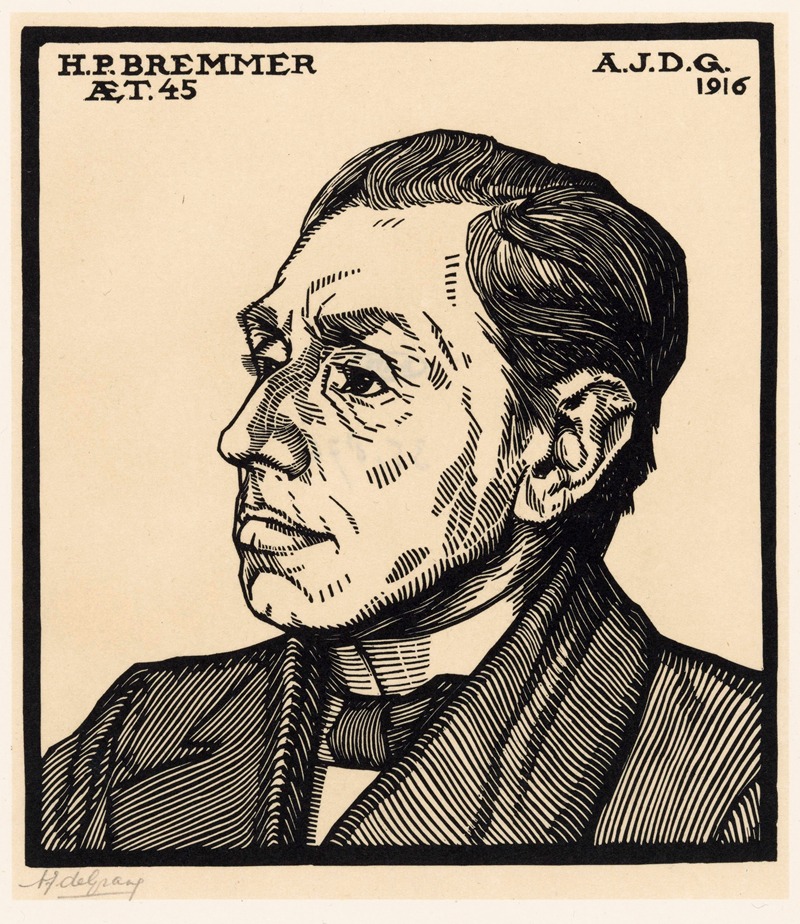
Portret van Hendricus Petrus Bremmer
A hand-painted replica of Julie de Graag’s masterpiece Portret van Hendricus Petrus Bremmer, meticulously crafted by professional artists to capture the true essence of the original. Each piece is created with museum-quality canvas and rare mineral pigments, carefully painted by experienced artists with delicate brushstrokes and rich, layered colors to perfectly recreate the texture of the original artwork. Unlike machine-printed reproductions, this hand-painted version brings the painting to life, infused with the artist’s emotions and skill in every stroke. Whether for personal collection or home decoration, it instantly elevates the artistic atmosphere of any space.
Julie de Graag was a Dutch artist known for her detailed and expressive works, primarily in the medium of drawing and printmaking. One of her notable works is the "Portret van Hendricus Petrus Bremmer," a portrait that exemplifies her skill in capturing the essence of her subjects with precision and sensitivity.
Hendricus Petrus Bremmer, often referred to as H.P. Bremmer, was a significant figure in the Dutch art world during the late 19th and early 20th centuries. He was an art critic, advisor, and a mentor to many artists of his time. Bremmer played a crucial role in promoting modern art in the Netherlands and was known for his keen eye for talent and his ability to nurture and guide artists. His influence extended to collectors as well, as he advised many on building their art collections, most notably Helene Kröller-Müller, whose collection became the foundation of the Kröller-Müller Museum.
Julie de Graag's portrait of Bremmer is a testament to her ability to convey character and depth through her art. While specific details about the creation date and the circumstances surrounding this particular portrait are not extensively documented, it is clear that de Graag's work was influenced by her interactions with prominent figures in the art community, including Bremmer. Her style is characterized by a meticulous attention to detail and a subtle use of line and shading, which can be seen in the portrait of Bremmer.
De Graag's work often reflects a deep understanding of her subjects, capturing not just their physical likeness but also their personality and presence. This ability to portray the inner life of her subjects is a hallmark of her artistic approach. In the "Portret van Hendricus Petrus Bremmer," de Graag likely employed her skills in drawing to create a piece that is both realistic and evocative, offering viewers insight into Bremmer's character and his importance in the art world.
The portrait is an example of de Graag's broader body of work, which includes a variety of subjects ranging from portraits to still lifes and landscapes. Her art is often noted for its clarity and precision, qualities that are evident in her depiction of Bremmer. Despite the challenges she faced in her personal life, including health issues that affected her ability to work, de Graag remained committed to her art, leaving behind a legacy of works that continue to be appreciated for their technical skill and emotional depth.
While the "Portret van Hendricus Petrus Bremmer" may not be as widely recognized as some other works from the period, it holds significance as a representation of the connections and influences within the Dutch art scene of the early 20th century. It also highlights the role of women artists like Julie de Graag, who contributed to the cultural landscape despite the challenges of their time.
In summary, the "Portret van Hendricus Petrus Bremmer" by Julie de Graag is a fine example of her artistic talent and her ability to capture the essence of her subjects. It reflects the interconnectedness of the art community in the Netherlands during her lifetime and underscores the importance of figures like Bremmer in shaping the direction of modern art in the country.





